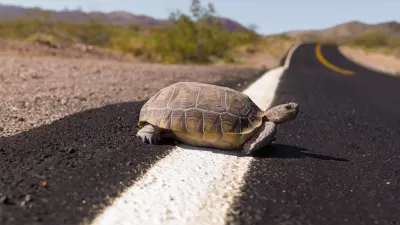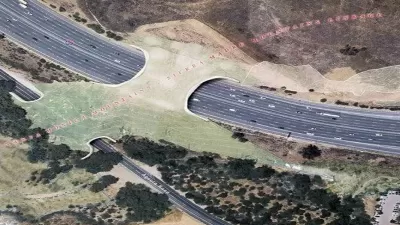When urban areas intrude into former wildlife habitat areas, animals face challenges moving across busy roadways. In Australia, designers have worked to create passages for koalas to avoid the dangers of speeding motorists.

Australia's koala population is under threat as sprawl in New South Wales and Queensland is leading to what has been described as a "a genuinely apocalyptic scenario" that could drive the local koala population into extinction. Darryl Jones of The Conversation (as reported in Phys.org) reports that koalas have adapted to urban intrusion less successfully than other types of wildlife, with one of the major causes of death being collisions with cars. In response, designers have looked at various methods to keep koalas from crossing roadways while still allowing a wide range of movement that was also important to the health of the koala population. One solution has been to adapt box culverts typically found under roadways to allow for passage of smaller animals. To create a safe passage that avoided the water that typically runs through the culverts, designers built a wide ledge that allowed smaller animals to easily walk through.
By attaching a wide ledge to the side of the culvert leading from one side of the road to the other, animals could potentially traverse the danger zone above.
This possibility proved unexpectedly fruitful. Within only a few weeks, a remarkable suite of fauna including echidnas, wallabies, possums and goannas had found and used the ledges. But most exciting of all were the numerous koalas captured on the monitoring cameras and tracked by various technologies. These otherwise arboreal marsupials, whose main proclivity is climbing trees or walking – quickly – to the next tree, had somehow discovered a way of avoiding the great risks of the traffic above by travelling below on an artificial ledge over water in a dark tunnel!
Jones reports that authorities are also looking at changing the behavior of drivers, who have shown little response to wildlife signs placed along the roadway. Electronic signs that report the speed of drivers and changes in roadway paving color have been suggested as possible methods to get drivers to slow down in wildlife crossing areas.
FULL STORY: Saving koalas through urban design

Alabama: Trump Terminates Settlements for Black Communities Harmed By Raw Sewage
Trump deemed the landmark civil rights agreement “illegal DEI and environmental justice policy.”

Planetizen Federal Action Tracker
A weekly monitor of how Trump’s orders and actions are impacting planners and planning in America.

The 120 Year Old Tiny Home Villages That Sheltered San Francisco’s Earthquake Refugees
More than a century ago, San Francisco mobilized to house thousands of residents displaced by the 1906 earthquake. Could their strategy offer a model for the present?

Ken Jennings Launches Transit Web Series
The Jeopardy champ wants you to ride public transit.

BLM To Rescind Public Lands Rule
The change will downgrade conservation, once again putting federal land at risk for mining and other extractive uses.

Indy Neighborhood Group Builds Temporary Multi-Use Path
Community members, aided in part by funding from the city, repurposed a vehicle lane to create a protected bike and pedestrian path for the summer season.
Urban Design for Planners 1: Software Tools
This six-course series explores essential urban design concepts using open source software and equips planners with the tools they need to participate fully in the urban design process.
Planning for Universal Design
Learn the tools for implementing Universal Design in planning regulations.
Clanton & Associates, Inc.
Jessamine County Fiscal Court
Institute for Housing and Urban Development Studies (IHS)
City of Grandview
Harvard GSD Executive Education
Toledo-Lucas County Plan Commissions
Salt Lake City
NYU Wagner Graduate School of Public Service





























